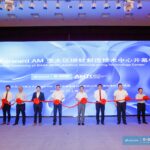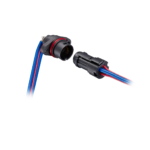ASIA ELECTRONICS INDUSTRYYOUR WINDOW TO SMART MANUFACTURING
Reliable Industrial Clamp Method Gains Traction
The spring clamp method, also called spring terminal method, holds wires with spring contacts instead of screws. This has been attracting attention as a connection method of power distribution and control devices and major companies expand products that adopt this method.
Previously, companies employed a method to bend a single wire into U-shape and wind it to a screw as connection method inside power distribution and control panels. Meanwhile, the method that combines a crimp terminal (round or Y-shape) and screw fastening gained popularity, and this method remains the mainstream at present.
However, screws loosen due to vibrations and periodical checks and retightening are necessary, and maintenance work is a big burden for the industry.
Improves Reliability, Features
Recently, the spring clamp method emerged and has been attracting attention among players even in the electrical construction industry. The method employs spring contacts, instead of screws, to hold the wires. Hence, this method is more reliable because it lessens chances of screws loosening due to vibrations, is simple to use, and is low maintenance as periodical retightening is not necessary.
Connection of single wire, stranded wire, and ferrule is possible by simply plunging them into terminal blocks by a single push. Connection of element wires does not require crimping work, and hence, they are more economical and feature excellent workability.

Adopt to New Method
Manufacturers of power distribution and control devices have been expanding products that adopt the spring clamp method. Mitsubishi Electric Corporation widens its EZ Connection factory automation (FA) and wiring devices for spring clamp terminal specification. The company deploys EZ Connection FA and wiring devices in the T12/T20 frames of the MS-T Series electromagnetic contractors and T5 frame electromagnetic relays. It also expands EZ Connection FA and wiring devices for non-fuse breakers, earth leakage breakers, circuit protectors, electromagnetic contactors, and electromagnetic relays.
Fuji Electric FA Components & Systems Co., Ltd., a subsidiary of Fuji Electric Co., Ltd., also widens spring terminal devices that reduce wiring manhours of control panels such as the F-QuiQ Series. Fuji Electric FA Components & Systems’ spring terminal devices achieve strong wire holding force by adopting its original plate spring. The company was the first in Japan to apply spring terminal to main circuit devices. It has adopted spring terminals in six types and about 3,500 models of main circuit devices. This include electromagnetic contactors, electromagnetic switches, and wiring breakers that are its main products.
The company promotes spring terminal devices targeting the existing market, which so far predominantly uses screws.
IDEC Corporation also expands its lineup of products, including control units that adopt the push-in connection method, which realizes reduced manhour, space saving, and vibration resistance. They also enable one-touch mounting by adopting spring terminal, relay sockets, and rail-mount terminal blocks.
Klippon Connect Push-in A Series rail-mount terminals reduce wiring manhour by about 55 percent of conventional products. Furthermore, the company has added to its lineup A2C 35 large-capacity terminal block, which achieves space saving of about 50 percent.




